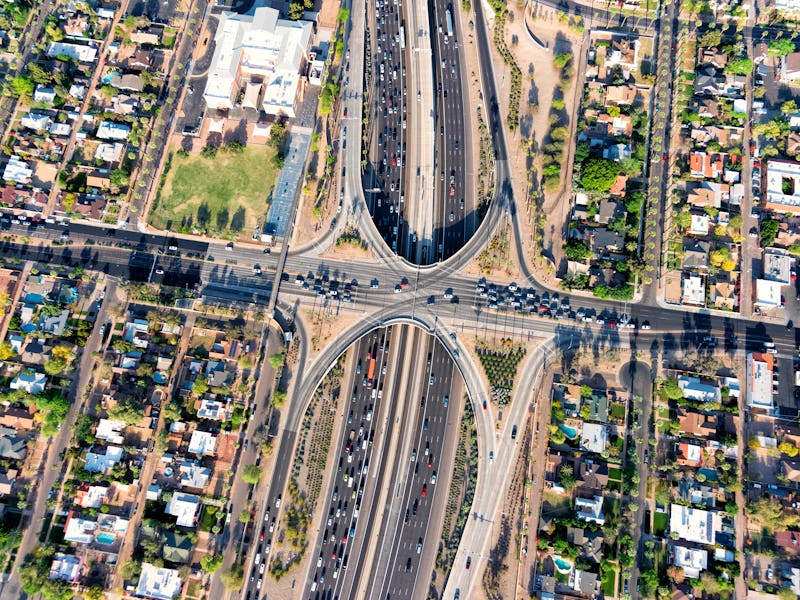Uber and Lyft are shaping cities in one deeply unexpected way
Car ownership seems to be increasing once ride-sharing comes to town

Ride-sharing companies like Uber and Lyft have become notorious for their sometimes brash entrances into cities. Documented in books like Super Pumped, ride-sharing companies enter cities quickly with the hopes of making their apps hard to live without. Lyft co-founder and president John Zimmer has even said that the company hopes to “eliminate” car ownership.
A new study, published Wednesday in the journal iScience, says that goal is a long way off.
In fact, introducing ride-sharing companies into an urban area can actually increase car ownership. Looking at vehicle registrations per capita, the team behind the study found a 0.7 percent increase on average.
The study, which looked at data in major US cities from 2011 to 2017, came as something of a surprise to its authors, including Jeremy Michalek, a professor of engineering and public policy at Carnegie Mellon University.
What's new — "I would have expected people to own fewer vehicles once they gain access to this alternative transportation mode. But that's not what we see in the data," he says in a press statement.
Speaking to Inverse, Michalek says that’s not all that was unexpected. The team didn’t realize how Uber and Lyft could affect different cities in radically different ways. “Specifically, that vehicle ownership increases more in car-dependent and slow-growth cities than in other types of cities and that transit ridership is displaced more in high-income cities with high rates of childless households than in other kinds of cities.”
Thinking Big — Previous studies have suggested the opposite of Michalek and his co-authors findings. One such study, from 2017, suggested that when Uber left Austin, Texas, having ride-sharing companies in a city changed behaviors, tilting them away from purchasing new cars.
But whereas the 2017 study looked at the specific dynamics of Austin, “our analysis is based on observed data across several hundred cities,” Michalek tells Inverse, 224 to be precise. “We also only observe what happens in aggregate — there are likely forces reducing vehicle ownership (riders don’t need to own as many vehicles) and forces increasing vehicle ownership (drivers purchase more vehicles than they would have otherwise).”
Side Hustle — Looking at the numbers in aggregate make it hard to determine where, precisely, this increase is coming from, but the ride-sharing companies might have something to do with it. “One possible explanation could be that there's an effect on the other side, where somebody who was on the verge of being able to afford a vehicle now has an incentive to buy one and earn some money with it,” Michalek says.
The study also looked at how ridesharing can affect mass transit usage, and shows that having children or not can make a big difference. If someone has children, it “may change how attractive an Uber or Lyft looks relative to a personal vehicle,” Michalek says. “For example, if I have to wait for a driver to install a car seat or perhaps carry my own car seat with me at my destination, it may be less attractive than owning my own vehicle.”
The need for a child seat could be the make-or-break for a parent considering getting their own car.
Can cities change? Elizabeth Irvin, Senior Transportation Analyst at the Union of Concerned Scientists who was not involved in the study, tells Inverse that the findings “show how much of an impact it has to design places where it's easy to get around without a car,” regardless if it is for a personal or professional drive.
One aspect of the study that Irvin found especially interesting was its look at families and childless households. “We often think about our transportation system, particularly our public transit system as something that gets people to move from work or to and from bars, and we don't often think about the different needs of families.”
The study comes with one big disclaimer—all of its data was taken before the Covid-19 pandemic, which has radically changed the economy.
“The question is, once the pandemic is behind us, do we return to the kinds of travel patterns and choices we saw before the pandemic, or are there systemic changes that won't go back to normal because people have permanently changed their behavior?,” Michalek asks. Irvin has a few suggestions.
One thing local governments could do to incentivize mass transit is looking at how they can “preserve right away on roads for transit. Things like Bus Rapid Transit where you have a lane on a road, so that even if you've got more cars you the bus doesn't get stuck behind traffic. The key thing for folks is to feel like their bus is reliable.”
Ride-sharing can provide important “last mile” benefits, Irving says, and she recommends looking at Chicago’s new ride-sharing tax for inspiration, noting that the fees are lowered for areas lacking regular public transit.
Abstract: We estimate the effects of transportation network companies (TNCs) Uber and Lyft on vehicle ownership, fleet average fuel economy, and transit use in U.S. ur-ban areas using a set of difference-in-difference propensity score-weighted egression models that exploit staggered market entry across the U.S. from2011 to 2017. We find evidence that TNC entry into urban areas causes an average 0.7% increase in vehicle registrations with significant heterogeneity in these effects across urban areas: TNC entry produces larger vehicle ownership in-creases in urban areas with higher initial ownership (car-dependent cities) and in urban areas with lower population growth (where TNC-induced vehicle adoption outpaces population growth). We also find no statistically significant average effect of TNC entry on fuel economy or transit use but find evidence of heterogeneity in these effects across urban areas, including larger transit ridership reductions after TNC entry in areas with higher income and more childless households.
This article was originally published on